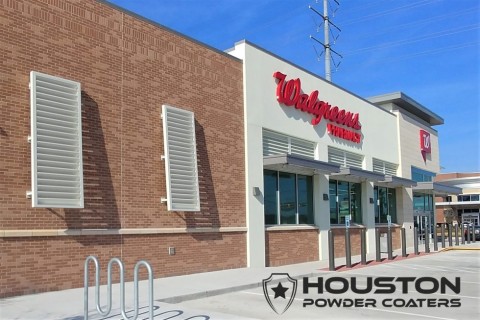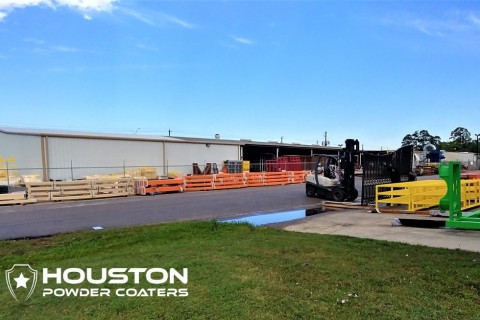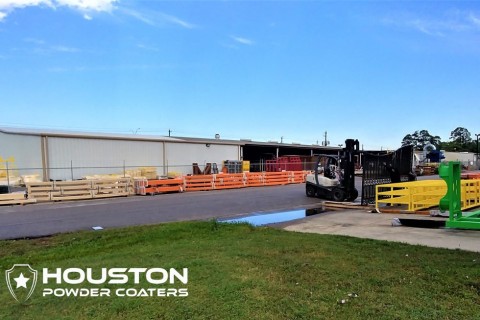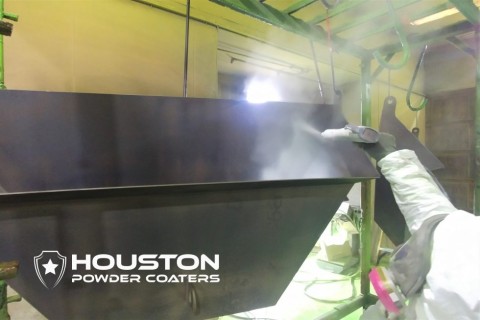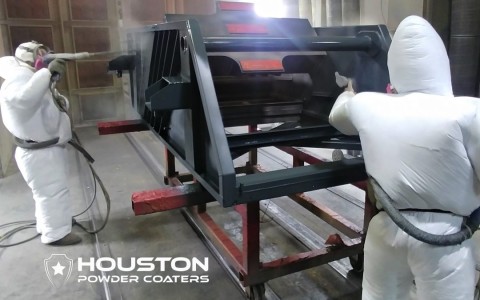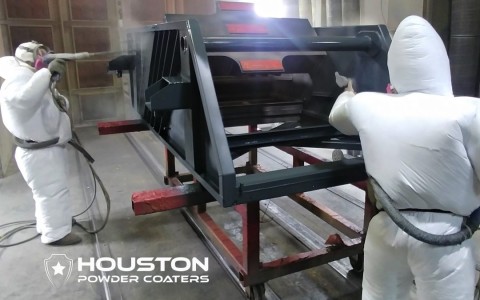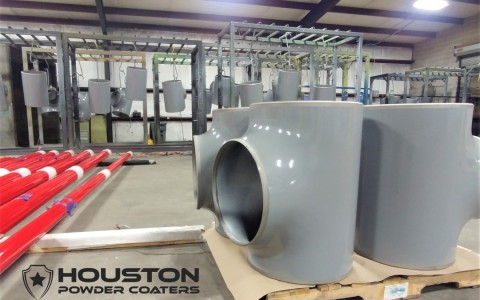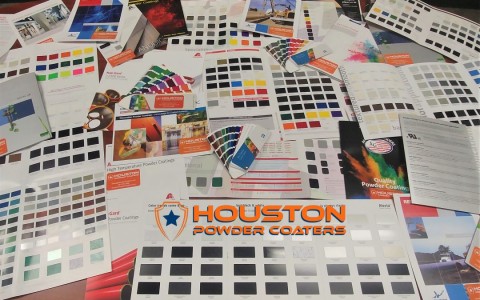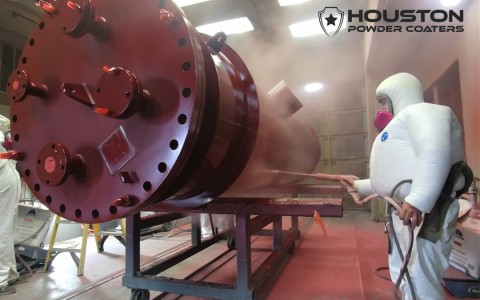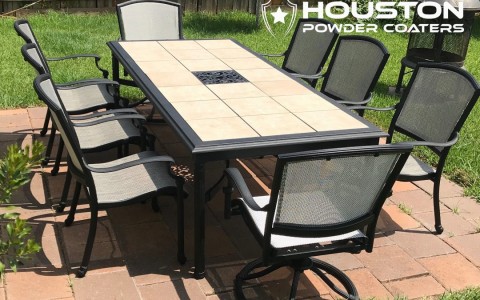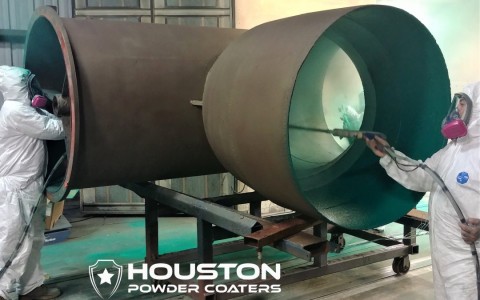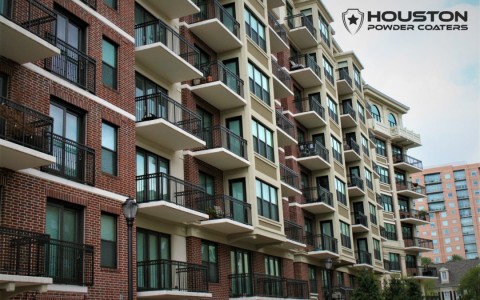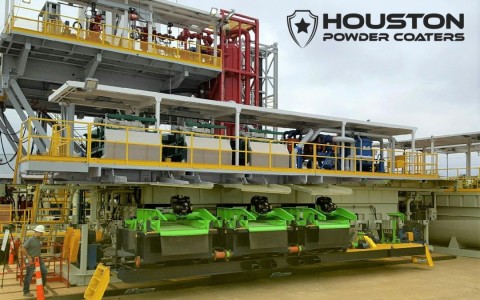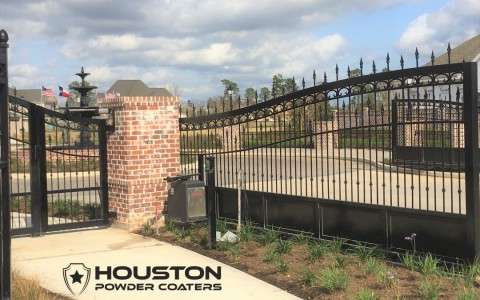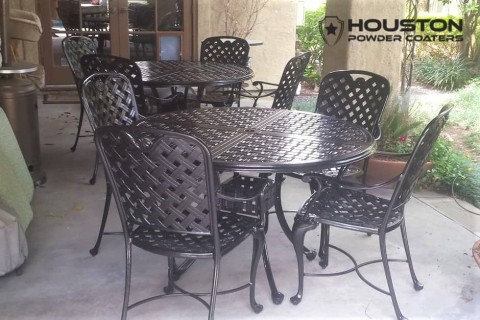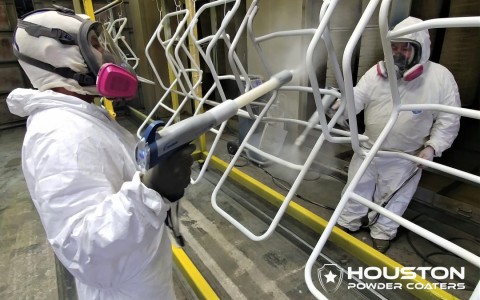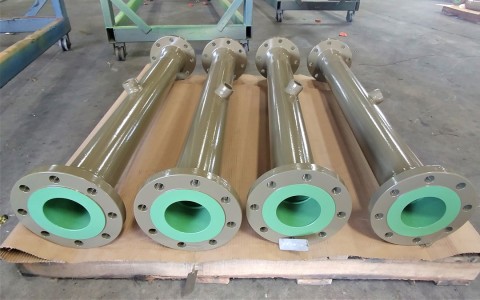Anodized aluminum is aluminum that has gone through an electro-chemical process that produces a thicker and more corrosion-resistant barrier. Pieces of aluminum are submerged in an acid solution while an electrical current passes through the bath. This causes an aluminum oxide film to develop on the surface of the aluminum substrate. This film is extremely durable and seen as an extra level of protection for aluminum much like the galvanization (zinc) safeguards steel.
Powder Coating Anodized Aluminum is a simple process, as limited surface preparation is required for the aluminum to properly receive the powder. The reason is that anodized surfaces are porous and therefore require only a smaller amount of prep. An acetone wipe-down and light sanding will be more than sufficient in creating the proper anchor profiles. Due to the corrosion-resistant aluminum oxide as well as the super-durable polyester powder coat, these aluminum pieces will retain gloss levels longer, stand up to abrasion and scuffs, and withstand corrosion much better than bare aluminum. Powder Coating Anodized Aluminum is an optimal double coating system that will elongate the lifespan of these time materials.
Anodized Architectural Powder Coating is a method of powder coating aluminum that does not require electro-chemical anodizing of the extruded substrate. The American Architectural Manufacturers Association (or AAMA for short) 2603 is an interior application that does not need to meet color retention guidelines of AAMA 2604/2605. It is cost effective, but if used outside does not have good color retention and is likely to chalk. AAMA 2604 is an intermediary coating that contains 50% fluoropolymer resin. This anodized powder coating is great for storefronts, doors and windows, and other high traffic areas. These coatings do not require a clear coat and can be applied in a single pass. In addition to color and gloss retention, AAMA 2604 coatings are hard and abrasion resistant.


